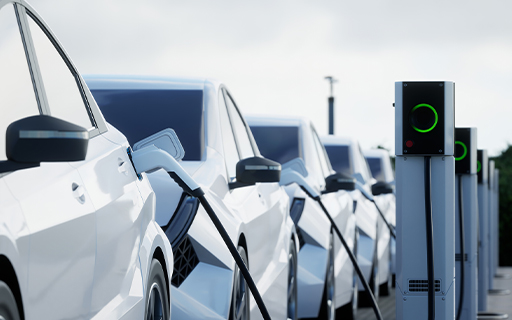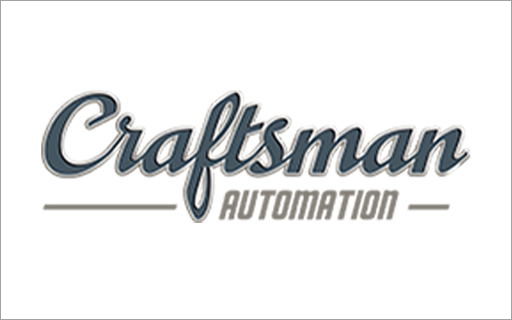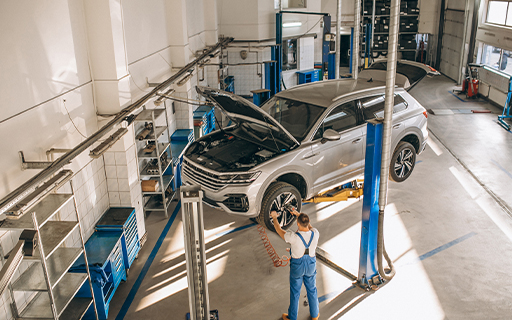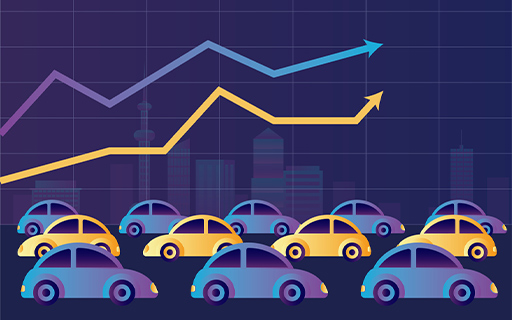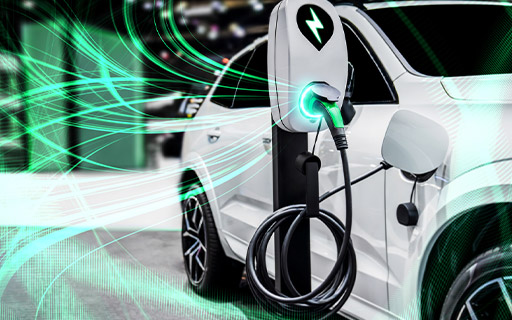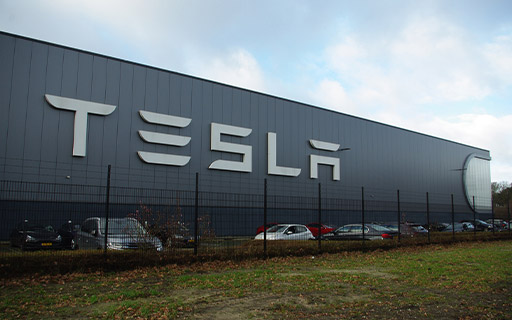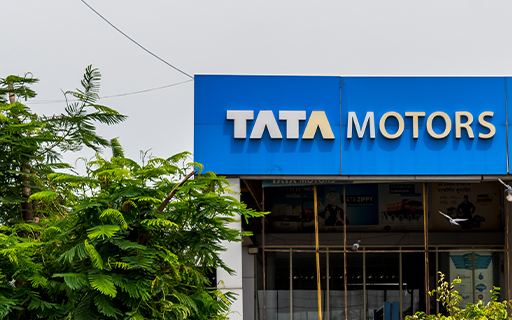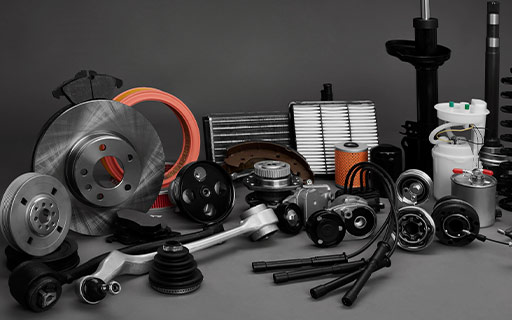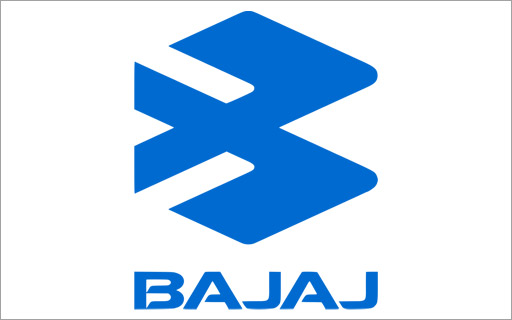India's Third Giant Leap
This Could be One of the Biggest Opportunities for Investors
- Home
- Outlook Arena
- Best Automobile Stocks in India
Best Automobile Stocks in India
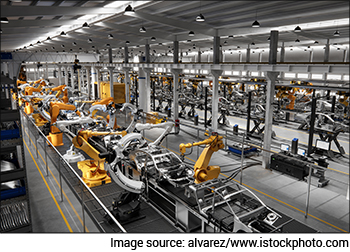
The Indian automobile industry is the fifth largest automobile market in the world with an annual production of 22.9 million vehicles in the financial year ending 2022. However, only 76% of it was for the Indian market.
The auto industry enjoys a strong export market, which accounts for 24% of the annual production.
The Indian automobile industry constitutes four segments: two-wheelers, three-wheelers, passenger vehicles and commercial vehicles.
While the two-wheelers segment dominates the market in terms of volume, the three-wheelers, passenger vehicles and commercial vehicles follow suit.
The entire industry has undergone a massive overhaul in the last few years. The eminent transition to electric vehicles (EVs) has changed the outlook of the automobile industry.
EVs are gaining attention across the globe as they help reduce emissions and depletion of natural resources.
The Indian electric vehicle (EV) market is developing rapidly. The EV adoption is based on the Paris agreement to reduce carbon emissions, improve air quality and reduce dependence on imported oil.
The total EV market is estimated to touch Rs 500 bn (US$ 7. 1 bn) by 2025, expanding at a CAGR of 36%.
The NITI Aayog aims to achieve EV sales penetration of 70% for all commercial cars, 30% for private cars, 40% for buses and 80% for two and three-wheelers by 2030. This number seems attainable with the earnest policy initiatives from the government in the form of grants and subsidies.
Porter's Five Forces Analysis of the Automobile Sector in India
Porter's Five Forces is a model that identifies and analyzes five competitive forces that shape every industry.
These are barriers to entry, bargaining power of suppliers, bargaining power of customers, threat of substitutes and competition within the industry.
A change in any of the forces normally requires a company to re-assess the marketplace.
Let us have a look at how these five forces shape the automobile sector:
#1 Barriers to Entry
The most attractive segment is one in which barriers to entry are high as they restrict the threat of new entrants.
Conversely if the barriers are low, the risk of new companies venturing into a given market is high.
In the automobile sector, barriers to entry are high. The primary reasons are high capital costs, technology, distribution network, and availability of automobile components.
#2 Bargaining Power of Suppliers
The bargaining power of suppliers is the ability of suppliers to put the firm under pressure. Suppliers may refuse to work with the firm or charge excessively high prices for unique resources.
The bargaining power of suppliers in the automobile sector is low primarily due to stiff competition.
#3 Bargaining Power of Customers
The bargaining power of customers is the ability of customers to put the firm under pressure. It is high if buyers have many alternatives and low if they have few choices.
In the automobile sector, the bargaining power of customers is very high due to the availability of several suppliers in the market.
#4 Competition
For most industries, having an understanding of the competition is vital to successfully marketing or selling a product.
The competition in the automobile industry has been intense for some time now and is expected to increase further.
#5 Threat of Substitutes
A substitute product uses a different technology to try to solve the same economic need.
The threat of substitutes was not very high in the automobile industry. Although public transport (buses/train) is readily available, it doesn't provide the same level of convenience and value, especially in tier 2 and tier 3 cities.
However, with increasing shared mobility options and improving public transport such as metros, this could change.
Porters Five Forces Analysis of the Automobile Sector in India
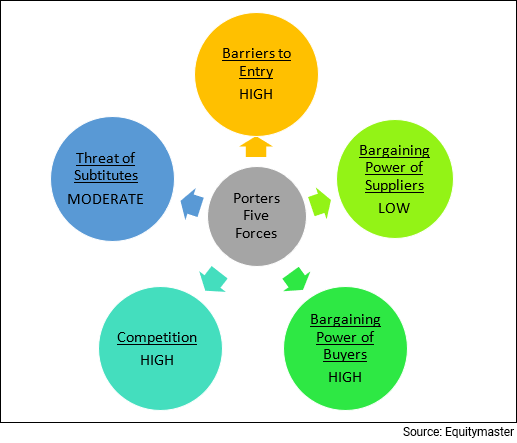
When to Invest in Automobile Stocks
The demand for automobiles is closely linked to the economic growth which makes it a highly cyclical industry. This means that for some reason the economy and by extension the stock market flounders, so will the automobile stocks.
Since economic cycles affect the earnings prospects, the best time to buy automobile stocks is at the start of an economic expansion. And the best time to sell is just before the economy begins to slow down.
So, if you invest in an automobile stock at the peak of an economic cycle there is good chance you will lose a huge chunk of the investment. Nevertheless, identifying the bottom of the cycle is not an easy task.
India has a relatively low car penetration level. When you combine this with healthy economic prospects of growth, it is safe to assume that we are on the path to becoming the third-largest passenger vehicle market in the world by 2030. This offers a huge opportunity to automobile companies.
Key Points to Keep in Mind While Investing in Automobile Stocks
Here are some key points to take note of before you invest in automobile stocks:
#1 Cyclicality of the sector
This is the most important factor one must keep in mind while investing in automobile stocks.
The automobile sector, being consumer cyclical, is dependent on business cycles and economic conditions. As the demand for automobiles is closely linked to the economy, automobile stocks are usually riskier - their fortunes are prone to economic booms and busts.
Usually, cyclical stocks can be used to generate high returns when the economy is doing well.
#2 The shift towards EVs
The Indian automobile industry is gradually shifting its focus to electric cars. With an aim to reduce emissions, the industry is charging forward in this direction with increased localised production.
The EV market is abuzz with a lot of activity and a host of new entrants eyeing the market. With the cost and affordability of EVs dropping in the coming years, we are not far from when most vehicles will be electric.
Therefore, if you're looking to invest in the automobile sector, the EV space is the place to be. However, there are various ways to play the EV opportunity.
Apart from looking for EV manufacturers, you can also look at companies that manufacture their components, such as lithium-ion batteries. Alternatively, you can invest in EV charging infrastructure providers or in commodities used to produce EV batteries, such as silver, nickel, and copper.
Another simple way to participate in this exploding sector is to invest in electric mobility services and financers.
#3 Competitve landscape
The massive improvement in the infrastructure and strong growth prospects of the country has attracted several international companies.
They are operating in the automobile market either through joint ventures with local partners or via independently owned operations.
This competitive landscape has led to the churning of market shares amongst the top players.
While this is likely to continue for some time, the incumbent players should end up with a lion's share over the decade.
#4 Profitability of the company
The profits of the automobile industry are highly dependent on the availability of skilled labour at low cost, robust R&D centres and low-cost steel production.
Apart from this, the margin profile of automobile manufacturers also depends on the segment they operate in, like two-wheelers, three-wheelers, commercial vehicles etc.
With low bargaining power, the sector operates on thin margins. But what they lack in margins, they make up for in high volume.
Here's a list of top automobile companies in India based on their consolidated net operating profit.
| Company | Net Sales (Rs m) | Operating Profit (Rs m) | Consolidated Net Profit (Rs m) |
|---|---|---|---|
| Bajaj Auto Ltd. | 3,31,447 | 64,679 | 50,189 |
| Mahindra & Mahindra Ltd. | 5,74,460 | 94,121 | 49,352 |
| Maruti Suzuki India Ltd. | 8,82,956 | 74,947 | 37,663 |
| Hero MotoCorp Ltd. | 2,92,455 | 39,257 | 24,730 |
| Eicher Motors Ltd. | 1,01,229 | 25,678 | 15,862 |
| TVS Motor Company Ltd. | 2,07,905 | 19,807 | 8,936 |
| Escorts Kubota Ltd. | 71,527 | 11,643 | 7,656 |
| Ashok Leyland Ltd. | 2,16,883 | 10,707 | 5,418 |
| V.S.T. Tillers Tractors Ltd. | 8,539 | 1,588 | 993 |
| HMT Ltd. | 235 | 509 | 275 |
Data as of March 2022
#5 Debt to equity (D/E) ratio
A company uses both equity and debt to run a business. However, the amount of debt it uses indicates its fixed obligations. Higher the leverage, higher will be the fixed charges such as interest expense which will lower the profitability.
Therefore, one must look for a debt-to-equity ratio of one or less than one.
Here's a list of top automobile companies in India with low debt to equity ratio.
| Company | Debt to Equity (x) |
|---|---|
| Bajaj Auto Ltd. | 0 |
| Mahindra & Mahindra Ltd. | 0.17 |
| Maruti Suzuki India Ltd. | 0.01 |
| Hero MotoCorp Ltd. | 0 |
| Eicher Motors Ltd. | 0 |
| TVS Motor Company Ltd. | 0.33 |
| Escorts Kubota Ltd. | 0 |
| Ashok Leyland Ltd. | 0.48 |
| V.S.T. Tillers Tractors Ltd. | 0 |
Data as of March 2022
#6 Return on Capital Employed (ROCE) ratio
Along with a low debt to equity ratio, a one must look for a high return on capital employed (ROCE).
Return on capital employed measures how much profits the company is generating through its capital. The higher the ratio, the better.
A ROCE of above 15% is considered decent for companies that are in an expansionary phase.
Here's a list of top automobile companies in India with more than 15% in ROCE.
| Company | ROCE (%) |
|---|---|
| Bajaj Auto Ltd. | 25 |
| TVS Motor Company Ltd. | 22.9 |
| Hero MotoCorp Ltd. | 21.1 |
| Eicher Motors Ltd. | 20.7 |
| V.S.T. Tillers Tractors Ltd. | 18.9 |
| Escorts Kubota Ltd. | 15.6 |
| Mahindra & Mahindra Ltd. | 15.3 |
Data as of March 2022
#7 Valuations
Two commonly used financial ratios used in the valuation of automobile stocks are -
Price to Earnings Ratio (P/E) - It compares the company's stock price with its earnings per share. The higher the P/E ratio, the more expensive the stock.
To find stocks with favorable P/E Ratios, check our list of stocks according to their P/E Ratios.
Price to Book Value Ratio (P/BV) - It compares a firm's market capitalization to its book value. A high P/BV indicates markets believe the company's assets to be undervalued and vice versa.
To find stocks with favorable P/BV Ratios, check our list of stocks according to their P/BV Ratios.
#8 Dividend yields
There is no consistent trend of dividends across the industry, with different companies having different dividend policies.
Here's a list of top automobile companies in India that score well on dividend yield and dividend pay-out.
| Company | Dividend Yield (eoy) | Dividend Payout (%) |
|---|---|---|
| Hero MotoCorp Ltd. | 4.14 | 76.8 |
| Bajaj Auto Ltd. | 3.83 | 80.7 |
| Mahindra & Mahindra Ltd. | 1.43 | 28 |
| Eicher Motors Ltd. | 0.85 | 36.2 |
| Ashok Leyland Ltd. | 0.85 | 54.2 |
| V.S.T. Tillers Tractors Ltd. | 0.83 | 17.4 |
| Maruti Suzuki India Ltd. | 0.79 | 48.1 |
| TVS Motor Company Ltd. | 0.6 | 19.9 |
Data as of March 2022
For more details, check out the top stocks offering high dividend yields.
Top Automobile Stocks in India
The automobile sector is in its growth phase. The top automobile stocks in India can immensely benefit with so many factors positively affecting the industry.
Here are the top automobile stocks in India which score well on crucial parameters.
| Company | RoE (Latest, %) | D/E (Curr FY, x) | Sales CAGR (3 yrs, %) | Profit CAGR (3 yrs, %) |
|---|---|---|---|---|
| Bajaj Auto Ltd. | 19.4 | 0 | 10.6 | -52.8 |
| Mahindra & Mahindra Ltd. | 13.4 | 0.17 | -4.9 | -19.8 |
| Tata Motors | -8.9 | 1.17 | -2.6 | -27.1 |
| Maruti Suzuki India Ltd. | 7.1 | 0.01 | 0.9 | -56.2 |
| Hero MotoCorp Ltd. | 16 | 0 | -4.5 | 4.8 |
| Eicher Motors Ltd. | 15.6 | 0 | 1.7 | -42.9 |
| TVS Motor Company Ltd. | 19.9 | 0.33 | 6.5 | 43.8 |
| Escorts Kubota Ltd. | 11.6 | 0 | 4.9 | -12.9 |
| V.S.T. Tillers Tractors Ltd. | 14 | 0 | 11.6 | -18.5 |
For more details on automobile stocks, check out Equitymaster's Powerful stock screener for filtering the best automobile stocks in India.
List of Automobile Stocks in India
The details of listed automobile companies can be found on the NSE and BSE website. However, the overload of financial information on these websites can be overwhelming.
For a more direct and concise view of this information, you can check out our list of automobile stocks.
Best Sources for Information on the Automobile Sector
Indian Brand Equity Foundation Automobiles and Mining Sector Report - https://www.ibef.org/industry/automobiles-and-mining
Society of Indian Automobile Manufacturers (SIAM) - https://www.siam.in/
Automotive Component Manufacturers of India (ACMA) - https://www.acma.in/
So, there you go. Equitymaster's detailed guide on the top automobile stocks in India is simple and easy to understand. At the same time, it offers detailed analysis of both the sector and the top stocks in the sector.
You can also checkout our playlist on Automobile Stocks on Equitymaster's YouTube channel.
Here's a list of articles and videos on the automobile sector and top automobile stocks in India. This is a great starting point for anyone who is looking to explore more about automobile stocks and the automobile sector.
Disclaimer: This article is for information purposes only. It is not a stock recommendation and should not be treated as such. Learn more about our recommendation services here...
![]() Best Auto Stock: Hyundai Motor India vs Maruti Suzuki
Best Auto Stock: Hyundai Motor India vs Maruti Suzuki
Oct 22, 2024
The automobile industry is set to witness strong growth amid strong demand, government support, and shift towards EVs. Which company could lead the way?
![]() Will Amara Raja Cash in on the EV Boom Through an IPO?
Will Amara Raja Cash in on the EV Boom Through an IPO?
Aug 14, 2024
Amara Raja seeks investment boost for its EV battery venture. Is an IPO on the Cards?
![]() Is the Most Valuable Tata Stock Set to Crash?
Is the Most Valuable Tata Stock Set to Crash?
May 25, 2024
This Tata group company is known to revive every time it is written off. Will it this time?
![]() Top 3 Auto Stocks Leading India's Vehicle Scrapping Revolution
Top 3 Auto Stocks Leading India's Vehicle Scrapping Revolution
Mar 28, 2024
Millions of old vehicles are currently polluting the air. And these automakers are set to take on the challenge, aiming for a success story in vehicle scrapping landscape.
![]() 4 Upcoming EV IPOs to Watch Out For
4 Upcoming EV IPOs to Watch Out For
Mar 16, 2024
Riding the wave of India's burgeoning electric vehicle market, these four companies are set to launch IPOs soon.
![]() Maruti's New Technology Might Forever Alter the Electric Vehicle (EV) Market
Maruti's New Technology Might Forever Alter the Electric Vehicle (EV) Market
Feb 16, 2024
Maruti is aiming for the skies and plans to launch electric air copters by 2025, with its eyes set on global expansion.
![]() This Stock is a Better EV Bet Than Tata Motors
This Stock is a Better EV Bet Than Tata Motors
Jan 16, 2024
The company boasts better fundamentals and a wider exposure to the electric vehicle theme.
![]() Tata AutoComp Systems is Set to Become a Key Battery Energy Storage Player
Tata AutoComp Systems is Set to Become a Key Battery Energy Storage Player
Jan 9, 2024
Tata Group is set to explore the IPO of its auto component arm soon. Details Inside.
![]() Craftsman Automation is Gearing up to Lead India's Futuristic Auto Industry
Craftsman Automation is Gearing up to Lead India's Futuristic Auto Industry
Nov 10, 2023
This midcap company is making the most of the disruption in the automobile sector.
![]() Gear up Your Investment Portfolio with These Top 5 Automobile Sector Mutual Funds
Gear up Your Investment Portfolio with These Top 5 Automobile Sector Mutual Funds
Nov 2, 2023
India's automobile sector has experienced unprecedented growth, there are several automobile and auto component stocks that are making headlines. Here's a list of top 5 mutual funds that hold a high allocation to automobile sector.
![]() Top 5 Automobile Stocks to Add to Your 2025 Watchlist
Top 5 Automobile Stocks to Add to Your 2025 Watchlist
Sep 26, 2024
The auto sector is finally seeing an up move after several challenges. Let's have a look at a few stocks in this space.
![]() Which Companies Manufacture Hybrid Cars in India?
Which Companies Manufacture Hybrid Cars in India?
Jul 11, 2024
The hybrid car market in India is heating up. Which companies will benefit? Read on...
![]() Can Tata Motors, Maruti Suzuki Crash After India's EV Policy 2024?
Can Tata Motors, Maruti Suzuki Crash After India's EV Policy 2024?
Apr 3, 2024
The policy may allow large-scale entry of Chinese auto firms like BYD in the local market.
![]() Tesla is Coming to India. Should You Worry About Your Auto Stocks?
Tesla is Coming to India. Should You Worry About Your Auto Stocks?
Mar 18, 2024
With India approving new EV policy to boost Tesla's market entry plans, how will Tesla shake up India's EV market? Find out...
![]() Tata Motors Demerger: Will Shareholders Witness Value Unlocking?
Tata Motors Demerger: Will Shareholders Witness Value Unlocking?
Mar 5, 2024
Tata Motors shocked investors with a post-market demerger announcement, causing an 8% surge in share price today. Can it fulfil its growth commitments?
![]() Why Tata Motors Share Price is Rising
Why Tata Motors Share Price is Rising
Feb 5, 2024
This multibagger stock continues to be on the radar of investors. Here's why.
![]() Vijay Kedia and Dolly Khanna Trim Stake in this Multibagger Auto Ancillary Stock
Vijay Kedia and Dolly Khanna Trim Stake in this Multibagger Auto Ancillary Stock
Jan 10, 2024
Find out why the seasoned investors turned bearish on this multibagger stock despite robust earnings.
![]() Why Hero MotoCorp Share Price is Rising
Why Hero MotoCorp Share Price is Rising
Nov 30, 2023
Hero MotoCorp hits 33-month high, after rallying 10% in 5 days. Here's why this largecap stock is on a roll.
![]() Smallcap Auto-Ancillary Stock Down 15% in 2 Days After Ashish Kacholia Pares Stake
Smallcap Auto-Ancillary Stock Down 15% in 2 Days After Ashish Kacholia Pares Stake
Nov 9, 2023
The company makes a wide range of aesthetic products catering to segments including two-wheelers, passenger vehicles, commercial vehicles, consumer durables, and appliances.
![]() Bajaj Auto Shares Hit All-Time High on Strong Q2 Results. Will the Smooth Ride Continue?
Bajaj Auto Shares Hit All-Time High on Strong Q2 Results. Will the Smooth Ride Continue?
Oct 19, 2023
Bajaj Auto is expected to benefit from improved sales of premium bikes and the upcoming launch of Scrambler 400X.
FAQs
Which are the top auto companies in India right now?
As per Equitymaster's Stock Screener, here is a list of the top auto companies in India right now...
These companies have been ranked as per their market capitalization. The higher the market cap, the higher the total value of the company.
Of course, there are other parameters you should take into account before forming a hard opinion on the stock valuation.
Where can I find a list of auto stocks?
The details of listed auto companies can be found on the NSE and BSE website. For a curated list, you can check out our list of automobile stocks.
How should you value auto companies?
Investing in stocks requires careful analysis of financial data to find out a company's true worth. However, an easier way to find out about a company's performance is to look at its financial ratios.
Two commonly used financial ratios used in the valuation of stocks are -
Price to Earnings Ratio (P/E) - It compares the company's stock price with its earnings per share. The higher the P/E ratio, the more expensive the stock.
To find stocks with favorable P/E Ratios, check out our list of auto stocks according to their P/E Ratios.
Price to Book Value Ratio (P/BV) - It compares a firm's market capitalization to its book value. A high P/BV indicates markets believe the company's assets to be undervalued and vice versa.
To find stocks with favorable P/BV Ratios, check out our list of auto stocks according to their P/BV Ratios.
Which are the top gainers and top losers within the automobile sector today?
Within the Automobiles sector, the top gainers were TATA MOTORS DVR (up 2.5%) and POPULAR VEHICLES & SERVICES LTD. (up 2.0%). On the other hand, PREMIER LIMITED (down 5.0%) and ATLAS CYCLE (HAR) (down 4.9%) were among the top losers.
For more, please visit the BSE auto index live chart and also check out our automobile sector report.







